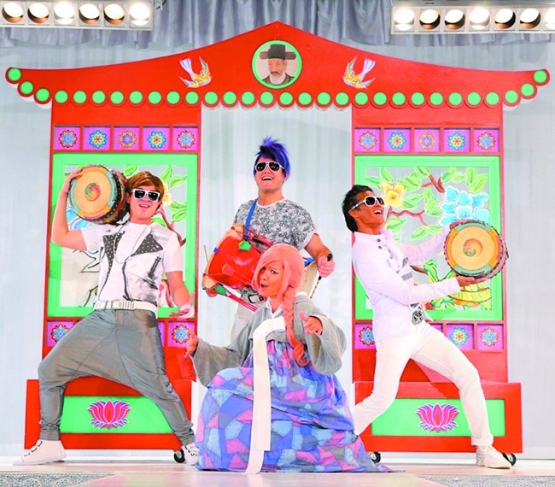Witness The Overthrow
“At 5 o’clock today, troops (of largely U.S. citizens) marched down the street to Iolani Palace. They are currently over there behind Arion Hall (where the post office is now). They’re across the street from the Hawaiian forces. And the Queen is on the steps of her palace …”
Craig Howes, UH professor and director of the Center for Biographical Research, describes the events surrounding Jan. 17, 1893, the date that a Provisional Government was declared in Hawaii, causing Queen Liliuokalani to file a protest of that action, and paving the way to events that would result in her eventual arrest two years later and to the end of Hawaiian monarchy. This weekend, as part of an informative walking tour, Mai Poina (Don’t forget): The Overthrow, Howes will be one of several performers giving more than 1,000 attendees a flashback to that infamous day.
mw-art-090413-2
“This wasn’t just haoles versus Hawaiians,” points out Howes. “Chinese merchants had a stake, Japanese plantation workers had a stake, and other Caucasians who were there had a stake.”
The presenters speak directly from historical sources, often from freshly translated Hawaiian language accounts. The audience moves in staggered groups from station to station at the very site where these events took place. At each station, a Hawaiian interpreter sets the context and introduces the character. Perhaps it’s a Japanese contract laborer, unhappy with the long hours and lack of medical attention by plantation owners. He favors the royal family, because the monarchy took steps to see that plantation owners treated their workers fairly.
Howes plays a Greek, as there were also a number of haoles, from Greeks and Jews to Portuguese and Germans, who were having a tough time making a living and competing with the monopolization of resources and trade by mercenaries and missionaries of American and British ancestry. The overthrow would lead to an iron-fisted clutch on church, government and business, with which neither Hawaiians nor any other interested parties could contend. Meanwhile, the queen had been interested in foreigners outside of the business and mission community. Her stance was they all deserved “a fair shake,” but, notes Howes, “that’s not a perspective that usually gets heard.”
Guests will receive viewer’s guides packed with a wealth of knowledge: maps, essays, bibliographies, information translated from Hawaiian, a timeline. At the conclusion of Mai Poina, noted Hawaiian scholars will be present to lead discussions and answer questions. Youth Speaks Hawaii will add a contemporary flavor to the experience with some slam poetry. Speaking of tangible context, last year, one youth tied ancient and present together through a poem addressing the Christopher Deedy situation.
This is the program’s fifth year, and each year the program grows and becomes more involved. Come, share in the history.
the TICKET stub
The Overthrow
When: Sept. 6, 7 and 8, with four tours each day
Where: Grounds of Iolani Palace
Cost: Free, reservations recommended
More Info: 534-8880, hawaiiponoi.info
ALSO SHOWING
K-Cinderella
Not to add to the storm of media bias against the young woman, but in this age of role models like Miley Cyrus with her oversexed VMA gyration debacle, thank goodness for a seriously excellent role model for girls. This one comes in the form Cinderella, a respectful and self-assured Korean Cinderella, playing at Honolulu Theatre for Youth through Sept. 28 (htyweb.org). The music, the choreography, the synthesized vocals, cotton candy-colored hair, and the slick, Gangnam Style suit and glasses all scream K-pop. Along with traditional drumming, costumes and a colorfully painted stage set, it adds up to quite a transportive experience.
I attended a show for mini people, about 300 of them, who had just been bused first thing in the morning from their elementary schools. Let me say this: Whoa, parents, your keiki can dance! Before you even enter the theater, some caffeineon-steroids music is blasting and your body can’t help but wriggle and shake. But these kids not only bounce to the beat, they’ve got all the smooth moves and flair. Throughout the performance, the students squealed, giggled, ooh’d, ahh’d and had some opportunities to participate.
The skeleton of the story remains, but in this version, Maile Holck as Konji emits a catchy verve and confidence that the traditional American cinder dweller lacks. It’s a slick little production.






